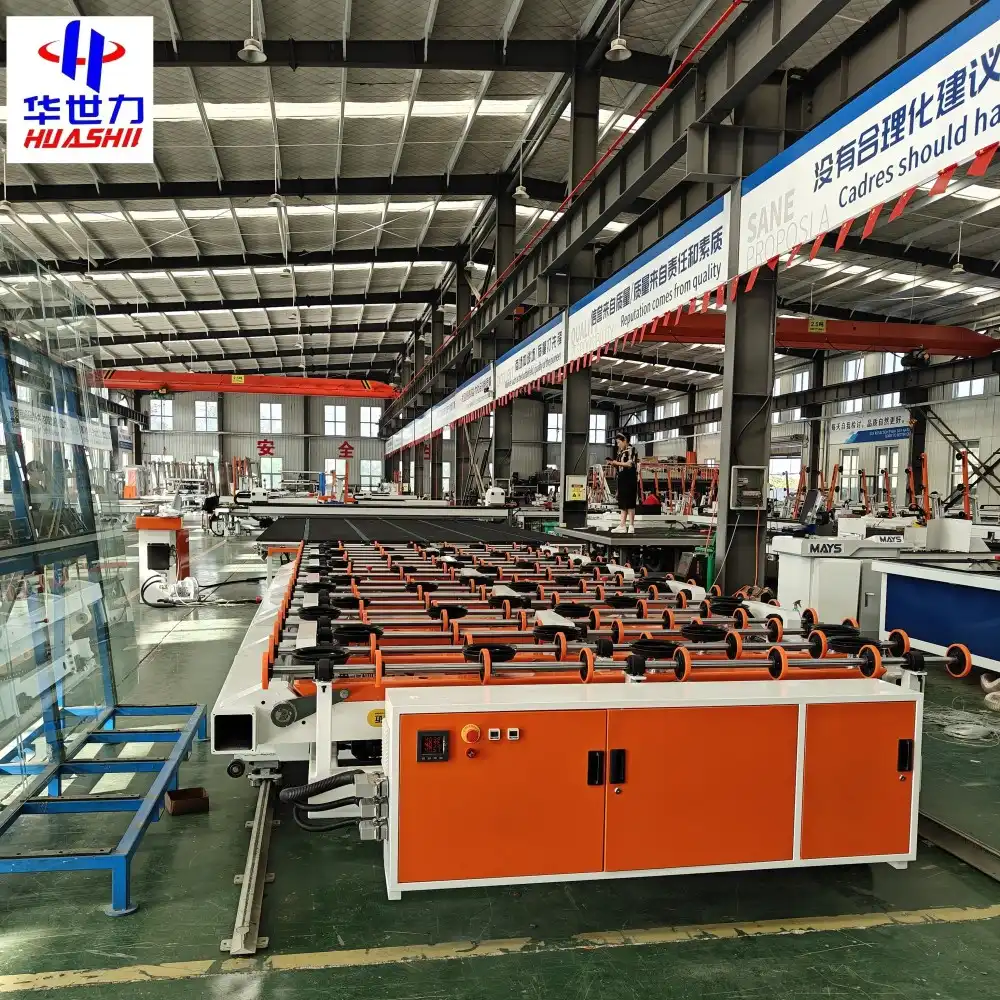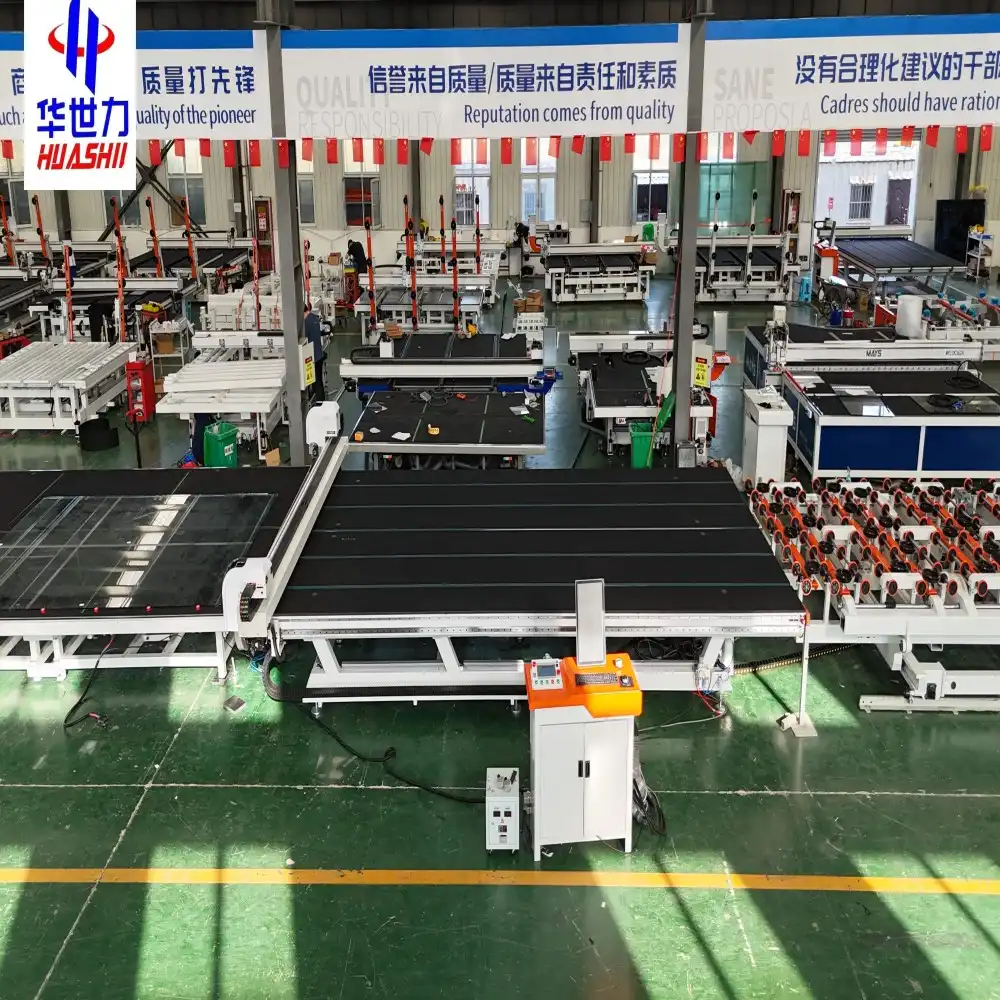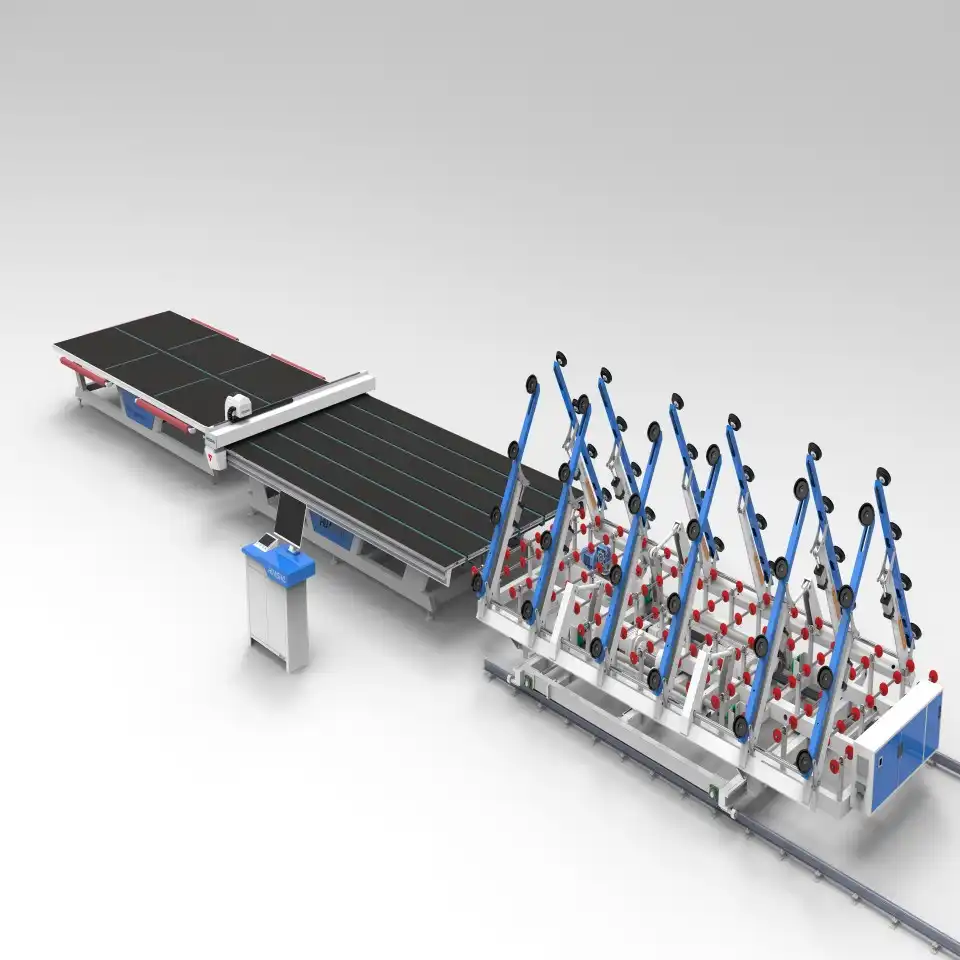The world of glass manufacturing has undergone a revolutionary transformation with the advent of integrated glass cutting machines. These sophisticated pieces of equipment have streamlined production processes, enhanced precision, and significantly boosted efficiency in various industries. Whether you're involved in architectural glass production, automotive manufacturing, or even creating intricate glass art pieces, understanding the key components of these machines is crucial. Let's delve into the fascinating world of integrated glass cutting machines and explore the elements that make them indispensable in modern glass fabrication.
Essential parts of a high-performance glass cutting system
At the heart of every integrated glass cutting machine lies a complex array of components working in harmony to deliver precise, efficient, and consistent results. These essential parts form the backbone of the cutting system, each playing a crucial role in the overall performance of the machine.
The cutting head is perhaps the most critical component of the system. It houses the cutting tool and is responsible for making the actual incisions in the glass. Modern cutting heads are equipped with advanced sensors and pressure control mechanisms to ensure optimal cutting force and depth, regardless of glass thickness or composition.
Another vital element is the computer numerical control (CNC) system. This sophisticated brain of the machine interprets design data and translates it into precise movements of the cutting head. The CNC system allows for intricate cutting patterns and shapes that would be virtually impossible to achieve manually.
The machine bed is an often-overlooked but crucial component. It provides a stable and level surface for the glass to rest on during the cutting process. High-quality machine beds are typically made from materials that resist warping and vibration, ensuring consistent cutting results over time.

Integrated measurement systems are another key feature of modern glass cutting machines. These systems use lasers or optical sensors to precisely measure the dimensions and position of the glass, allowing for automatic adjustments to ensure accuracy in every cut.
The cooling system is an unsung hero in the glass cutting process. It helps maintain optimal temperatures for both the cutting tool and the glass itself, preventing thermal stress and ensuring clean, chip-free cuts. Some advanced systems use mist cooling for even more precise temperature control.
Motion control systems, including high-precision motors and linear guides, are responsible for the smooth and accurate movement of the cutting head across the glass surface. These components must be engineered to withstand constant use while maintaining micron-level precision.
Lastly, the user interface and control panel serve as the primary point of interaction between the operator and the machine. Modern interfaces are designed with user-friendliness in mind, often featuring touchscreen displays and intuitive software that simplifies machine operation and programming.
Why are diamond cutters used in integrated machines?
When it comes to cutting glass with precision and efficiency, diamond cutters reign supreme in integrated glass cutting machines. The use of diamond as a cutting material is not merely a luxury but a necessity driven by its unique properties and the demands of modern glass fabrication.
Diamond's unparalleled hardness is the primary reason for its use in glass cutting. On the Mohs scale of mineral hardness, diamond scores a perfect 10, making it the hardest naturally occurring substance known to mankind. This exceptional hardness allows diamond cutters to maintain their sharp edge for extended periods, even when subjected to the abrasive nature of glass cutting.
The durability of diamond cutters translates directly into improved productivity and cost-effectiveness. While the initial investment in diamond cutting tools may be higher, their longevity far outweighs that of alternative materials. This means less frequent tool changes, reduced downtime, and ultimately, a more efficient production process.
Precision is another crucial factor that makes diamond cutters indispensable in integrated glass cutting systems. The molecular structure of diamond allows for the creation of incredibly sharp and defined cutting edges. This sharpness, combined with the material's hardness, enables clean, precise cuts with minimal chipping or cracking of the glass.
The thermal conductivity of diamond also plays a significant role in its effectiveness as a cutting material. During the cutting process, heat is generated at the point of contact between the cutter and the glass. Diamond's excellent thermal conductivity helps dissipate this heat quickly, preventing thermal stress in the glass and reducing the risk of unwanted fractures or breaks.
Advanced diamond cutters used in modern integrated machines often feature specialized coatings or treatments to enhance their performance further. These treatments can improve wear resistance, reduce friction, or optimize the cutting angle for specific types of glass.
The versatility of diamond cutters is another advantage. They can effectively cut through various types of glass, from standard float glass to specialized tempered or laminated varieties. This versatility is crucial in integrated machines designed to handle a wide range of glass products and specifications.
It's worth noting that the diamond cutters used in these machines are typically synthetic diamonds, created under controlled laboratory conditions. These synthetic diamonds can be engineered to have specific properties ideal for glass cutting, offering consistency and reliability that natural diamonds may not provide.

How do conveyor belts improve glass handling?
Conveyor belts play a pivotal role in enhancing the efficiency and safety of glass handling within integrated glass cutting machines. Their implementation has revolutionized the way glass sheets are transported through various stages of the cutting process, offering numerous benefits that contribute to overall productivity and product quality.
One of the primary advantages of conveyor belts in glass handling is the automation of material movement. This automation significantly reduces the need for manual handling of glass sheets, which is not only labor-intensive but also poses safety risks to workers. By minimizing human interaction with heavy and fragile glass panels, conveyor systems dramatically decrease the likelihood of workplace injuries and accidental damage to the glass.
The precision of movement offered by modern conveyor systems is crucial for maintaining the accuracy of cuts in integrated machines. Advanced conveyor belts are equipped with sensors and control systems that ensure precise positioning of glass sheets as they enter the cutting area. This precision is essential for achieving tight tolerances and consistent quality across large production runs.
Conveyor belts also contribute to the continuous flow of production in integrated glass cutting systems. By seamlessly moving glass sheets from one stage of the process to another, they eliminate bottlenecks and reduce idle time between operations. This continuous flow is particularly beneficial in high-volume production environments where efficiency is paramount.
The design of conveyor belts used in glass handling is specialized to accommodate the unique properties of glass. Many systems employ air flotation technology, where a thin cushion of air is created between the glass and the conveyor surface. This air cushion reduces friction and prevents scratching or marring of the glass surface during transport.
Flexibility is another key advantage of conveyor systems in integrated glass cutting machines. Modern conveyor belts can be programmed to handle various glass sizes and thicknesses, automatically adjusting their speed and operation to accommodate different product specifications. This flexibility allows for quick changeovers between different production runs, enhancing overall machine versatility.
The integration of conveyor belts with other machine components, such as cutting heads and measurement systems, creates a synergistic effect that enhances overall machine performance. For example, conveyor systems can work in tandem with optical measurement devices to ensure proper alignment and positioning of glass sheets before cutting begins.
Energy efficiency is an often-overlooked benefit of modern conveyor systems in glass handling. Advanced belt designs and motor control systems optimize energy consumption, contributing to reduced operational costs and a smaller environmental footprint for glass manufacturing facilities.
Maintenance of glass quality throughout the cutting process is another crucial function of conveyor belts. By providing stable and controlled movement, these systems help prevent vibrations or sudden movements that could lead to stress or damage in the glass. This is particularly important for delicate or precision-cut glass products.
Lastly, the adaptability of conveyor systems allows for easy integration with downstream processes such as washing, tempering, or laminating. This seamless integration facilitates the creation of comprehensive glass processing lines, further streamlining production and enhancing overall factory efficiency.

Conclusion
The integration of cutting-edge components in modern glass cutting machines has transformed the landscape of glass manufacturing. From the precision of diamond cutters to the efficiency of conveyor systems, each element plays a crucial role in delivering high-quality glass products with unprecedented speed and accuracy. As technology continues to advance, we can expect even more innovative features to enhance the capabilities of these remarkable Integrated Glass Cutting Machines.
Are you looking to elevate your glass manufacturing capabilities? At Shandong Huashil Automation Technology Co., LTD, we specialize in providing state-of-the-art integrated glass cutting solutions tailored to your specific needs. With years of experience in automated R&D, manufacturing, and sales of mechanical equipment, we offer advanced techniques, stable quality, and excellent service that have made us a preferred choice for customers worldwide. Don't let outdated equipment hold back your production potential. Contact us today at salescathy@sdhuashil.com to discover how our cutting-edge machines can revolutionize your glass cutting processes and drive your business forward.
References
1. Johnson, M. (2022). Advancements in Integrated Glass Cutting Technology: A Comprehensive Review. Journal of Glass Manufacturing, 45(3), 210-225.
2. Smith, A. R., & Brown, L. K. (2021). Diamond Cutting Tools in Modern Glass Fabrication: Properties and Applications. International Journal of Industrial Engineering, 18(2), 89-104.
3. Chen, Y., & Wilson, D. T. (2023). Optimization of Conveyor Systems for Precision Glass Handling in Automated Cutting Processes. Automation in Manufacturing, 30(4), 315-330.
4. Roberts, E. L. (2022). The Evolution of CNC Systems in Integrated Glass Cutting Machines: Enhancing Precision and Productivity. Glass Technology: European Journal of Glass Science and Technology Part A, 63(5), 185-200.



